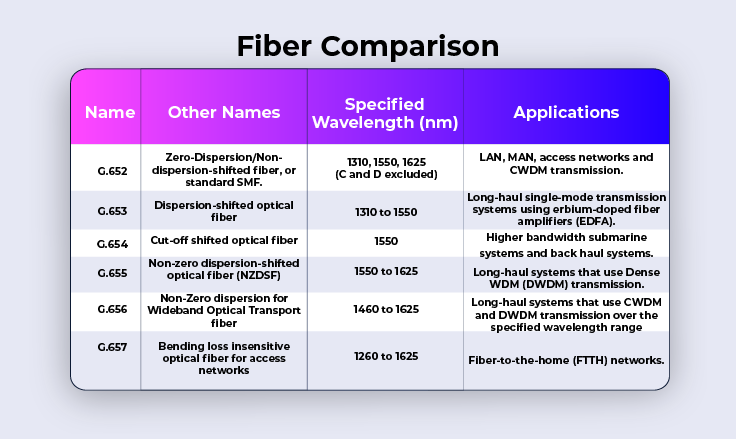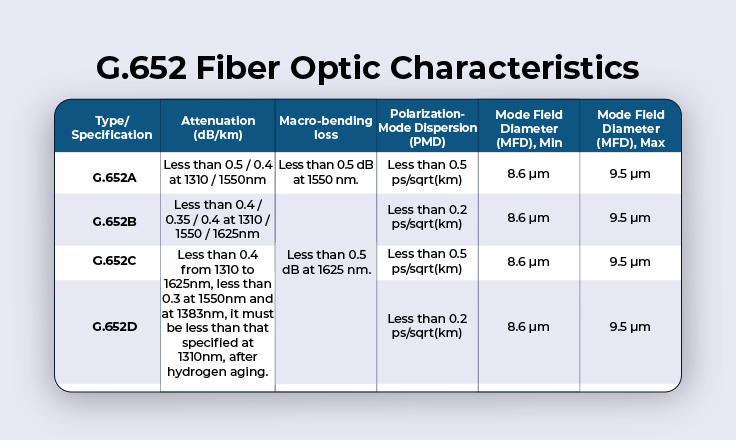Of the many attributes that optical fiber has in supporting high-bandwidth data transmission over long distances, low attenuation is one of the most important. It is, therefore, important that care be taken during installation to ensure that low attenuation is maintained.
Though a variety of factors affect attenuation, the bending of a fiber has an outsized impact. Bending can lead to leakage of light from the fiber, affecting the performance of the overall network. The radius of the bend, as well as the number of bends, can adversely affect the user experience.
Storage, shipping, and installation of the optical fiber, particularly in cabled form, can cause unavoidable attenuation due to bending. There are two types of bending: microbending and macrobending. Typically, the bends are too small and minor to be visible to the naked eye in microbending. These kinds of bends are often caused by forces exerted on the fiber by other cable components or defects. On the other hand, macrobending refers to bends caused during installation to fit fibers inside splice closures or patch panels. These kinds of bends are visible to the naked eye.

Growing relevance of single-mode fiber macrobending
Single-mode fiber has emerged as the fiber of choice for transmitting data over long distances because of its low attenuation. The International Telecommunications Union (ITU-T), a UN agency that issues global standards for information and communications technologies, has issued a framework for the number of turns, bend radius, and maximum losses in dB at the relevant wavelengths for each fiber grade to ensure minimal attenuation.
ITU-T specifications for fiber macrobending
The ITU-T G.657 is the latest edition of single-mode optical fiber standards. Essentially, there are two categories of ITU-T G.657: G.657.A and G.657.B. The G-657.A fiber is compliant with the previous ITU-T standards G.652.D while G.657.B is a bend-insensitive optical fiber cable. The G.657.A and G.657.B can be further divided into G.657.A1, G.657.A2, G.657.B2, and G.657.B3, which are differentiated by their macrobending requirements.
As per the ITU-T recommendations, G.652.D fiber, which is typically used for general transport networks with a 30mm bend radius, can have a maximum macrobending loss of 0.1 dB at 1625nm.
On the other hand, G.657.A1, with ten turns and a 15mm bend radius, can have a maximum macrobending loss of 0.25 dB at 1550nm and 1.0dB at 1625nm. This fiber is most appropriate for access networks. G.657 A1 fiber with one turn at a 10mm bend radius cannot have macrobending loss of more than 0.75 dB at 1550nm and 1.5 dB at 1625nm.

The G.657.A2 and G.657.B2, with one turn at a 7.5mm bend radius, can have maximum macrobending losses of 0.5 dB at 1550nm and 1.0dB at 1625nm. On the other hand, G.657.A2 and G.657.B2, with one turn at a 10mm bend radius, can have maximum macrobending losses of 0.1 dB at 1550nm and 0.2 dB at 1625nm. The same fiber with ten turns at a 15mm bend radius can have maximum macrobending losses of 0.03 dB at 1550nm and 0.1 dB at 1625nm.
The optical fibers in the category of G.657.B3 are typically used for short distances at the end of access networks and generally have a lot of bends. As per ITU-T standards, the G.657.B3 optical fibers with one turn at a 5mm bend radius can have maximum macrobending losses of 0.15dB at 1550nm and 0.45 dB at 1625nm, while one turn at a 7.5mm bend radius can have maximum macrobending losses of 0.08 dB at 1550nm and 0.25dB at 1625nm. The G.657.B3 optical fibers of one turn at a 10mm bend radius can have maximum macrobending losses of 0.03 dB at 1550nm and 0.1dB at 1625nm.

HFCL offers a comprehensive range of single-mode fibers compliant with the specifications issued by ITU-T. FlexiBend and FlexiArch are G.657.A1 category 250-micron fiber diameter optical fibers, while FlexiArch Plus and FlexiArch Plus Micro are G.657.A2 category optical fibers. HFCL also comes with Flexi ZWP, a G.657.D optical fiber cable and FlexiArch Micro, a G.657.A1 200-micron optical fiber. These optical fibers are designed for minimal bending to ensure optimal attenuation for a superior experience in each of their respective intended applications.
In conclusion
Optical fibers are the backbone of the global economy and are crucial to providing reliable, fast, and low-latency communications networks. As data demands continue to surge, service providers must adhere to industry standard specifications for macrobending to ensure that optical network performance is optimized.